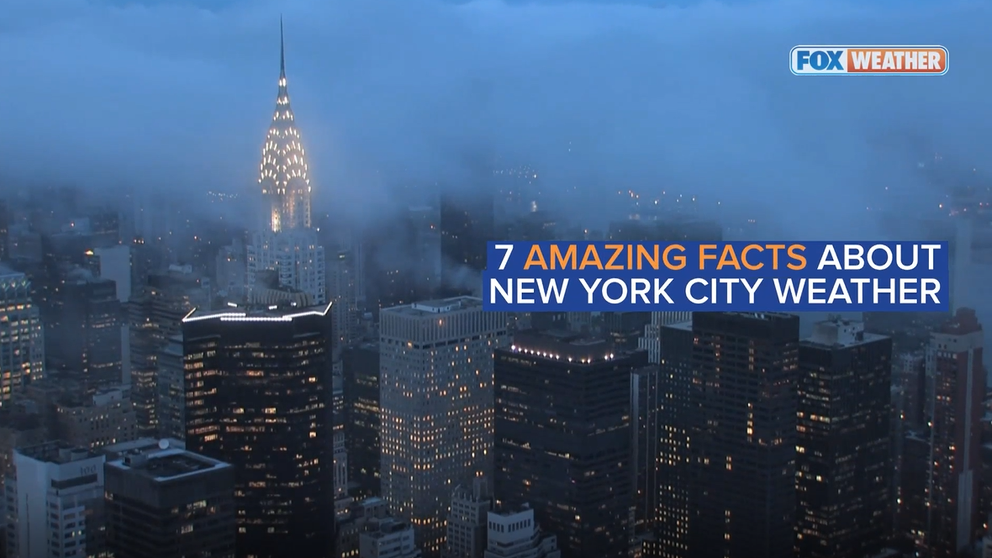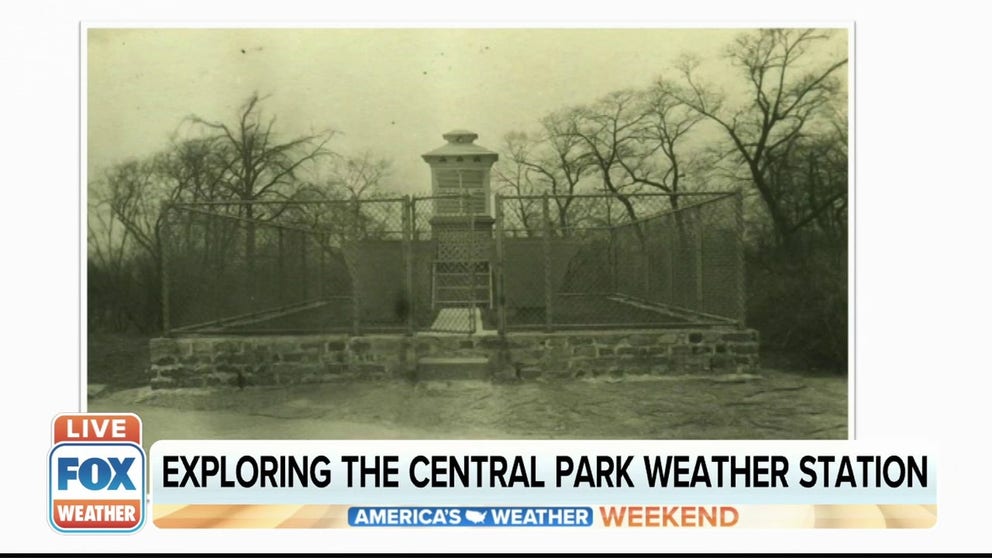New York City arguably has the most unique weather observations in America
You can walk up to Central Park’s Belvedere Castle and witness more than 100 years of meteorological history
7 amazing weather facts about New York City
7 amazing weather facts about New York City.
Central Park isn’t just for your morning run before catching the subway to the office. It has been a major site for daily weather observations since 1867, midway through Andrew Johnson’s four-year term as the 17th president of the United States.
The idea of building a weather station in Central Park came about in 1866, when the annual report of the Board of Commissioners of Central Park discussed an intent to maintain a system of meteorological observations to obtain facts that would be of general scientific interest. In 1867, the creation of the Central Park Meteorological Department resulted in the first daily weather observations being taken inside the park at the "Central Park Observatory."
The Central Park Board of Commissioners submitted an application in 1868 to the State of New York, requesting to establish a permanent meteorological observatory in Central Park to serve New York City.
A meteorologist named Dr. Daniel Draper was appointed as the first and only director of this New York Meteorological Observatory on Dec. 28, 1868. Fittingly, Draper went on to design all of the original weather instruments that were installed there, which consisted of self-registering devices that could determine daily meteorological values such as temperature and precipitation and, thus, begin the 150-plus-year Central Park climatological record that continues to this day.
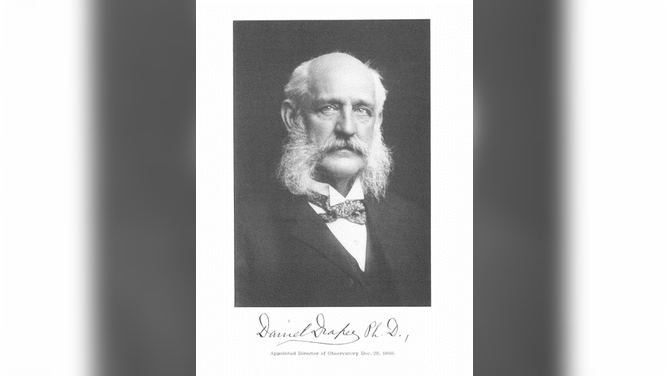
Daniel Draper, the first and only director of the New York Meteorological Observatory.
(National Weather Service)
"He created it. He built it all from scratch," said Chris Stachelski, climate service program manager at the National Weather Service’s Eastern Region Headquarters on Long Island, referring to Draper and the weather equipment he designed. "You know, he ordered the parts where he could get them from in those days, in catalogs and stuff like that."
The weather observations were officially taken on the roof of the Arsenal Building on 5th Avenue in Central Park East. The annual cost for the observatory in 1868 was listed as $1,005 in labor and $135.06 for materials. In 2021 dollars, that would be $19,052 in labor and $2,560.39 for materials.
On May 5, 1869, legislation was passed in New York state that authorized the construction and maintenance of a full weather observatory in Central Park, in addition to the Museum of Natural History and an astronomical observatory. This still remains the only known specific public meteorological observing site in the U.S. to be initiated by an act of legislation, according to Stachelski.
"It’s actually really interesting because, if you look at the scope of something like the Museum of Natural History – it’s been there a long time; it’s a well-known entity in the city – and the fact that this weather station in Central Park was created with the Museum of Natural History in the same legislation act, is actually really interesting because it really shows how high profile the desire to have this was way back in that timeframe," Stachelski said.
Official Central Park weather records begin in 1869
The National Weather Service formally recognizes all the weather observations taken in Central Park dating back to Jan. 1, 1869, when the high temperature in New York City was 29 degrees and the low was 19. There was also 9 inches of snowfall measured that day.
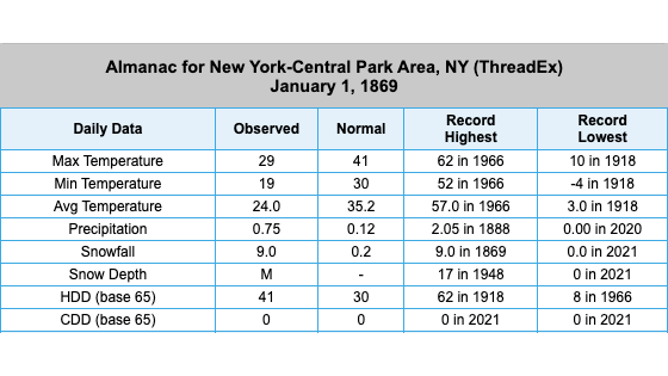
National Weather Service NOWData for Central Park from Jan. 1, 1869.
(National Weather Service)
However, these Central Park weather records were not always the official ones for New York City. Stachelski said what’s now known as the National Weather Service did not come to The Big Apple until the 1870s, when it was called the Signal Service. (In 1890, the agency’s name changed to the Weather Bureau, which it remained until 1970, when it became the National Weather Service.)
For many years, this NWS predecessor was located in a number of buildings in Lower Manhattan, and that’s where the official New York City weather observations were taken. Stachelski said the office was located right across from Battery Park in the Whitehall Building up until December 1960.
Then, it moved to Rockefeller Center into a new office at "30 Rock," and when that happened, the Weather Bureau lost any place to put weather equipment. So in January 1961, New York City’s official weather observation transferred from the Battery up to Central Park, where it remains today.
WHY THE SCIENCE OF SUPERSTORM SANDY WAS BOTH NORMAL AND ABNORMAL
"That’s kind of a unique piece of trivia that a lot of people are not aware of," Stachelski said. "If you go back and you read a lot of old reports in publications and stuff from the media that cite ‘New York City set a record high for the day’ – you look back in like the 1930s to 1950s – they do not reference Central Park; they all reference the Weather Bureau station down in the Battery."
The move to Belvedere Castle in 1920
Exploring the historic Central Park weather station
FOX Weather Multimedia Journalist Will Nunley takes a look at the Central Park weather station located at Belvedere Castle.
Although there have been daily weather observations taken in Central Park since 1867, the weather instruments have not always been in the same physical location within the park.
On Jan. 1, 1920, the instruments relocated to their present location in and near Belvedere Castle, which was originally intended to be a Victorian Folly – a fantasy structure that provides a great backdrop and views – but without a real purpose, according to CentralPark.com.
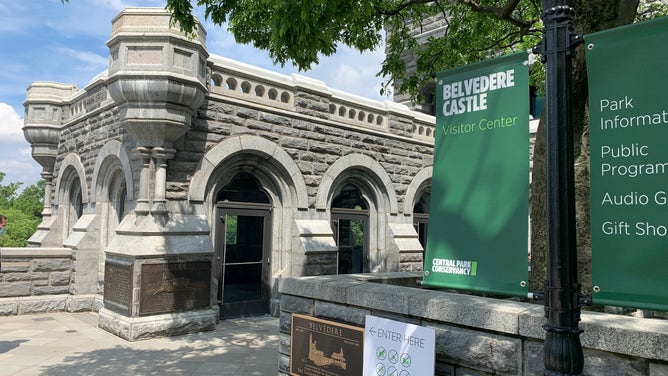
A 2021 photograph of Belvedere Castle.
(Will Nunley/FOX Weather)
Stachelski explained that most of the weather equipment sits inside an enclosure just to the south of Belvedere Castle, while a small amount of equipment can be found inside the castle itself.
Belvedere Castle sits atop a giant rock outcrop known as Vista Rock, the second-highest natural point in Central Park, according to the Central Park Conservancy. Stachelski said that measurements of wind speed and direction are taken from the castle’s roof in order to get above the tree line for a more accurate reading.
"And so we have nearly 101 years of observations taken in the same place," Stachelski explained. "What is unique about this equipment is that it’s in the same geographic location, and that is a very difficult thing to do, even in rural areas, let alone in a densely populated city such as New York. We really just don’t have a lot of land to put the equipment on, so the fact that it really hasn’t moved makes it unique."
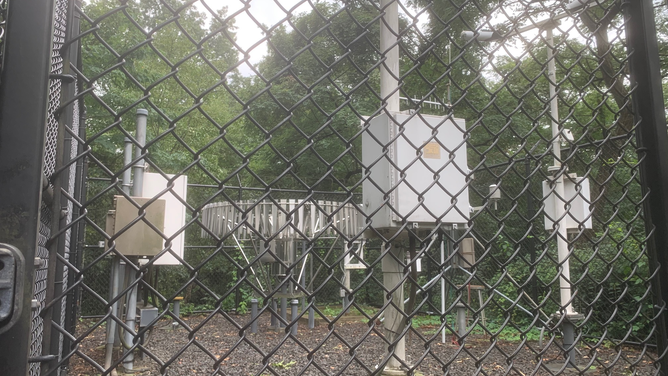
A 2021 photograph of the weather instruments at Belvedere Castle.
(Brian Donegan/FOX Weather)
In addition, this weather observatory at Belvedere Castle is easily visible to those passing by. Most weather equipment is installed at airports in grassy areas, where you can’t really see it unless you’re on the runway taxiing in and out on an airplane.
"This equipment is in plain view. It’s really not hidden. It’s been like that for over 100 years, where it’s been visible to the public," Stachelski said. "And so it’s kind of unique in that fact because it really shows that this is what we do to collect weather data. And there’s not a lot of stations like this as far as that are live, real-time, streamed in a large city, where you can just walk up to official equipment – that you can just go up and see in person – so it is very unique in that aspect."
Everything at Belvedere Castle is automated, except for snowfall. That’s the one element a human still has to do manually every winter by sticking a ruler into the snow.
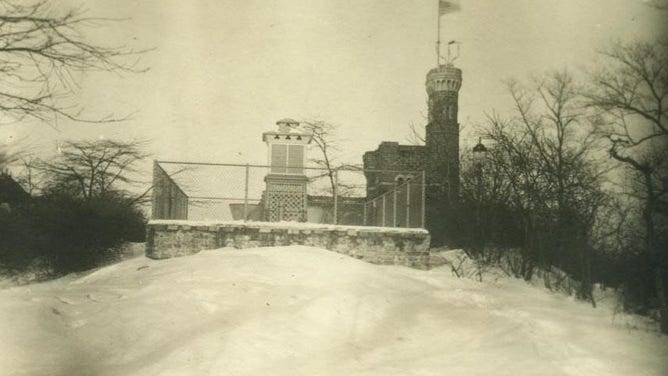
A circa 1920 photograph of the weather instruments at Belvedere Castle.
(National Weather Service)
In December 1995, the NWS officially closed its doors in Rockefeller Center and moved to its current location in Upton, New York, on eastern Long Island. So it had to turn over the snowfall measurements to a third party.
"When we moved out here to Long Island, initially, the Central Park Zoo provided the snowfall measurements, and they did that for 20 years," Stachelski said.
Then, in the late fall of 2015, the Central Park Conservancy became the snowfall observers in Central Park.
"We have another meteorologist here on staff who goes out to Central Park, works with the Conservancy, and provides them the equipment and the training on how to take the snowfall measurements and trains the crew out there," Stachelski said. "So we actually still do depend on humans for a fair amount of the work at this site. If it wasn’t for humans – even though it’s automated equipment – the equipment would not run, and also, we wouldn’t get snowfall readings."
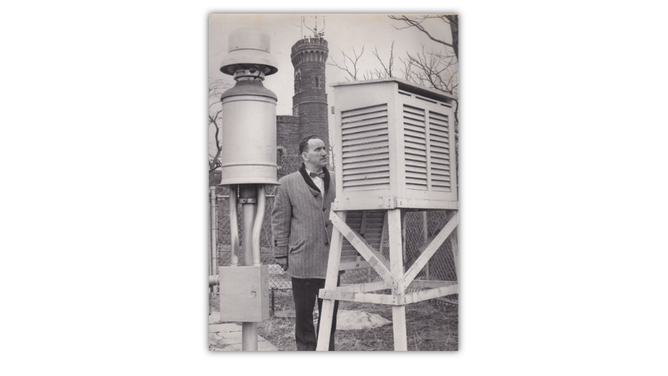
A circa 1961 photograph of a meteorologist taking weather observations at Belvedere Castle.
(National Weather Service)
Different from other weather observatories
There are two other weather observatories in the northeastern United States similar to the one that’s been at Belvedere Castle for more than 100 years – Blue Hill Observatory near Boston and Mount Washington, New Hampshire – but they are both contracted out and not operated by the NWS.
Dating back to 1885, Blue Hill Observatory is the oldest continuous weather observation site in the northeastern U.S., according to Stachelski. Although weather observations have been taken in Central Park since 1867, they did not come from Belvedere Castle until 1920.
Mount Washington is home to some of the most extreme weather in the Northeast, as the observatory is located at the mountain summit at 6,288 feet above sea level.
"The difference between them and Central Park is we actually flat out operate Central Park, so it’s all our equipment – it’s all ours," Stachelski said. "However, they actually have people directly there that are still on-site, humans that take the observations."
Both Central Park and Blue Hill are officially recognized as Centennial Observing Stations by the World Meteorological Organization. According to the NWS, there are only 11 such stations recognized in the U.S.
